Star Fort
Introduction
Text-to-speech Audio
Images
NPS signage at Star Fort
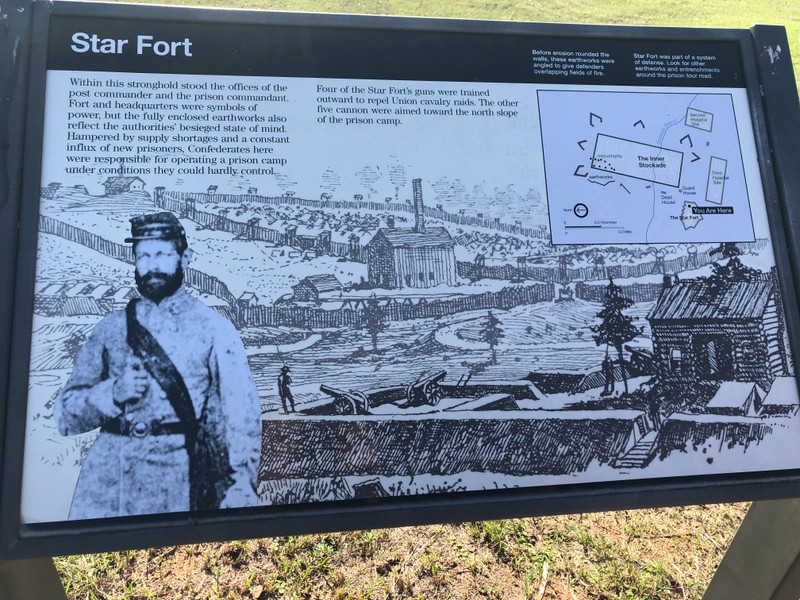
Earthworks facing the camp at Star Fort
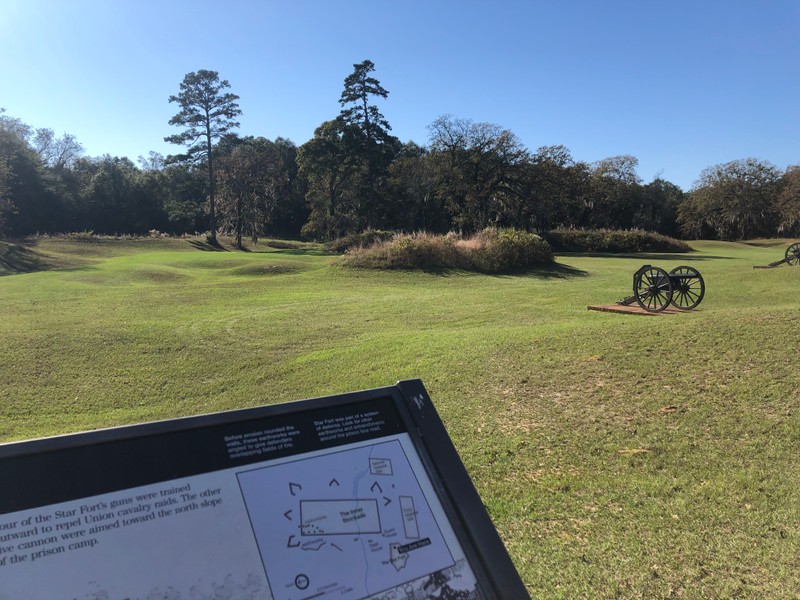
Backside of Star Fort earthworks
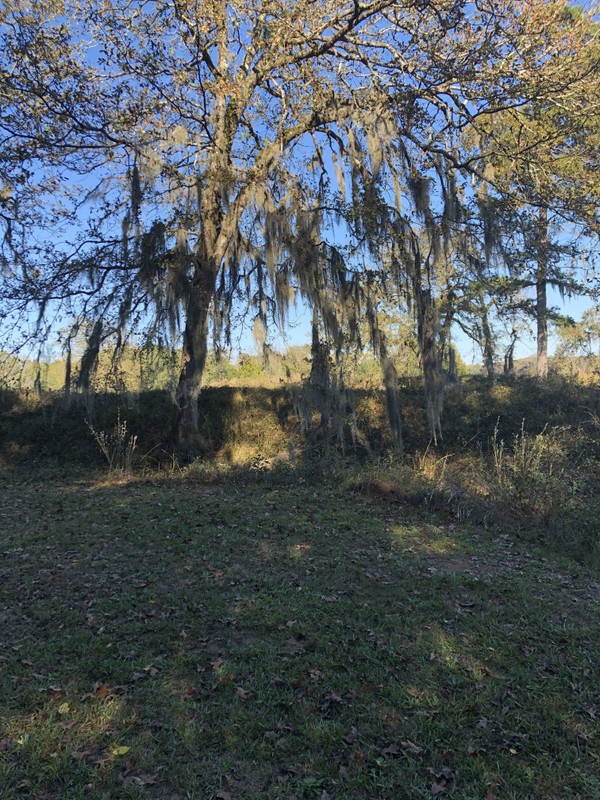
Inside earthwork defenses in Star Fort
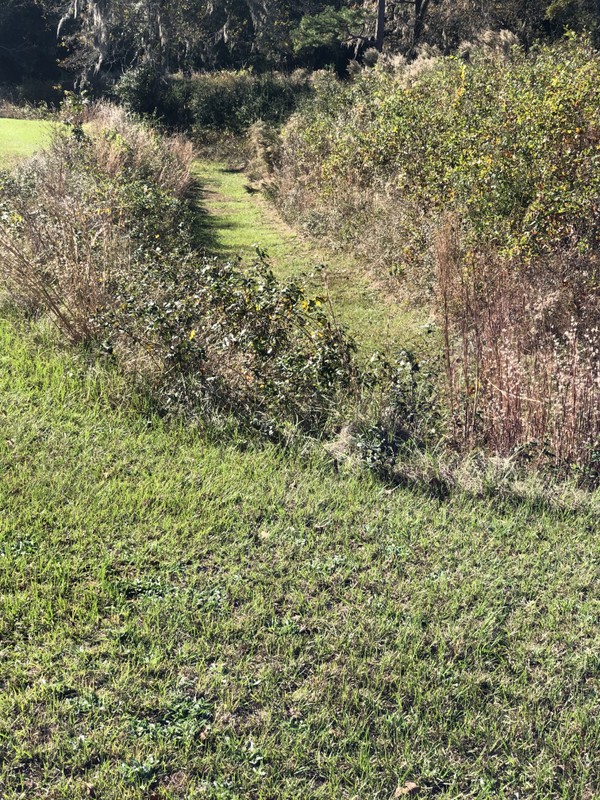
Replica cannon placed in Star Fort
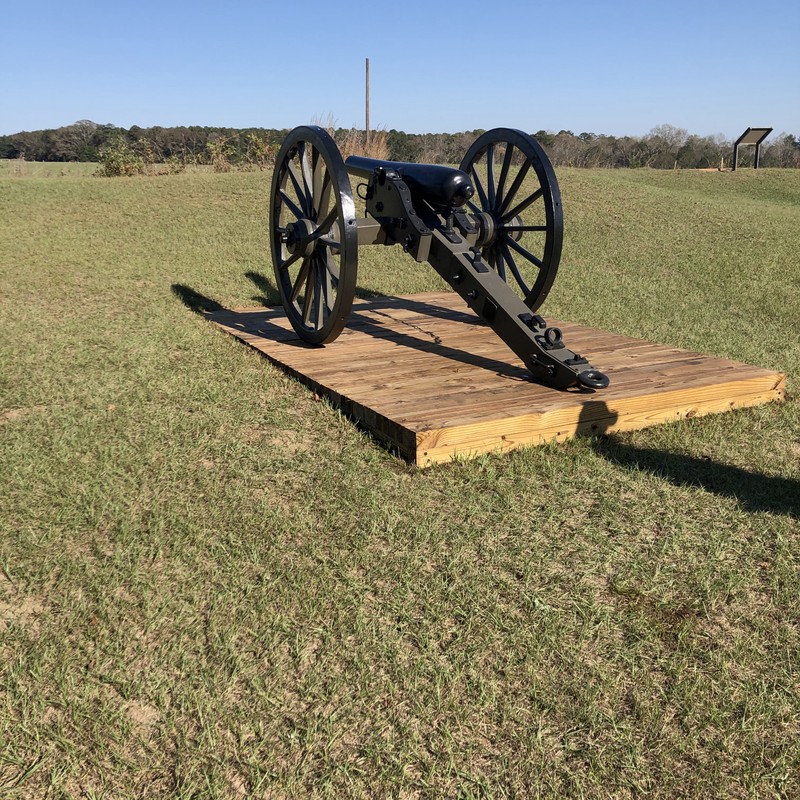
Backstory and Context
Author-Uploaded Audio
Jennifer Hopkins, Park Guide, Georgia Public Broadcasting Education, "Star Fort: Andersonville's Prison Command Center." February 28, 2019. 2:06, https://www.youtube.com/watch?v=XfkzPmm4x2k
Text-to-speech Audio
The Confederacy built Star Fort, like the other earthworks surrounding the prison camp, to offer a high-ground position for Confederate troops to defeat possibly revolting or escaping Union prisoners. Confederate leaders believed that sufficient artillery placed on the high ground would be sufficient to “cow the prisoners,” and in May 1864, General Howell Cobb when visiting the prison made continued recommendations to extend both the stockade and the earthworks.[1] The Fort was the designated headquarters on site for Captain Wirz and General Winder, commanders of the prison. Unlike the other corner earthworks, the Star Fort served as a central location for Confederate command and not only defense. Additionally, the other earthworks also served as a barrier against possible attack by Union troops seeking to free the prisoners.
The Star Fort still stands 375 feet from the southwest corner of the prison. When constructed, the fort had numerous angles and a large traverse dividing it, with two magazines and a well inside. The fort maintained twelve guns (cannons) with five trained continuously on the slope of the camp just inside the stockade wall.[2] From each corner, guns could “sweep the prison interior with grapeshot or shells.”[3]
Prisoners could look up daily at the foreboding view of the Star Fort, which sat immediately next to the small field where the dead were buried. As W.F. Lyon remembered,
“The place for depositing the dead as they were carried out was in a line with Captain Wirtz’s headquarters, and in full view of the hill.”[4]
When visiting the site, it is easy to imagine the dread of Union prisoners as they sat day after day under the watchful eye of the Confederate commanders in the Star Fort. Daily roll call, rationing, and death counts only reminded prisoners of the despairing conditions they suffered within the camp.
Sources
[1] Edwin C. Bearss, Andersonville National Historic Site Historic Resource Study and Historical Base Map (Washington, D.C.: Office of History and Historic Architecture, Eastern Service Center, 1970), 96. Nps.gov, accessed December 15, 2020.
[2] Bearss, Andersonville National Historic Site Resource Study, 99.
[3] John L. Maile, Prison Life in Andersonville, With Special Reference to the Opening of Providence Spring (Los Angeles: Grafton Publishing Company, 1912), 29. Project Gutenberg, accessed December 15, 2020. http://www.gutenberg.org/files/39584/39584-h/39584-h.htm#Page_53
[4] William Franklin Lyon, In and Out of Andersonville Prison (Detroit, Michigan: Geo. Harland Co., Publishers, 1905), 42. HathiTrust, accessed December 15, 2020. https://babel.hathitrust.org/cgi/pt?id=hvd.32044024496366&view=1up&seq=9
Personal Photograph Erin Del Giudice, Nov. 14, 2020
Personal Photograph Erin Del Giudice, Nov 14, 2020
Personal photograph Erin Del Giudice Nov 14 2020
Personal photograph Erin Del Giudice Nov. 14, 2020
personal photograph, Erin Del Giudice, Nov. 14, 2020
